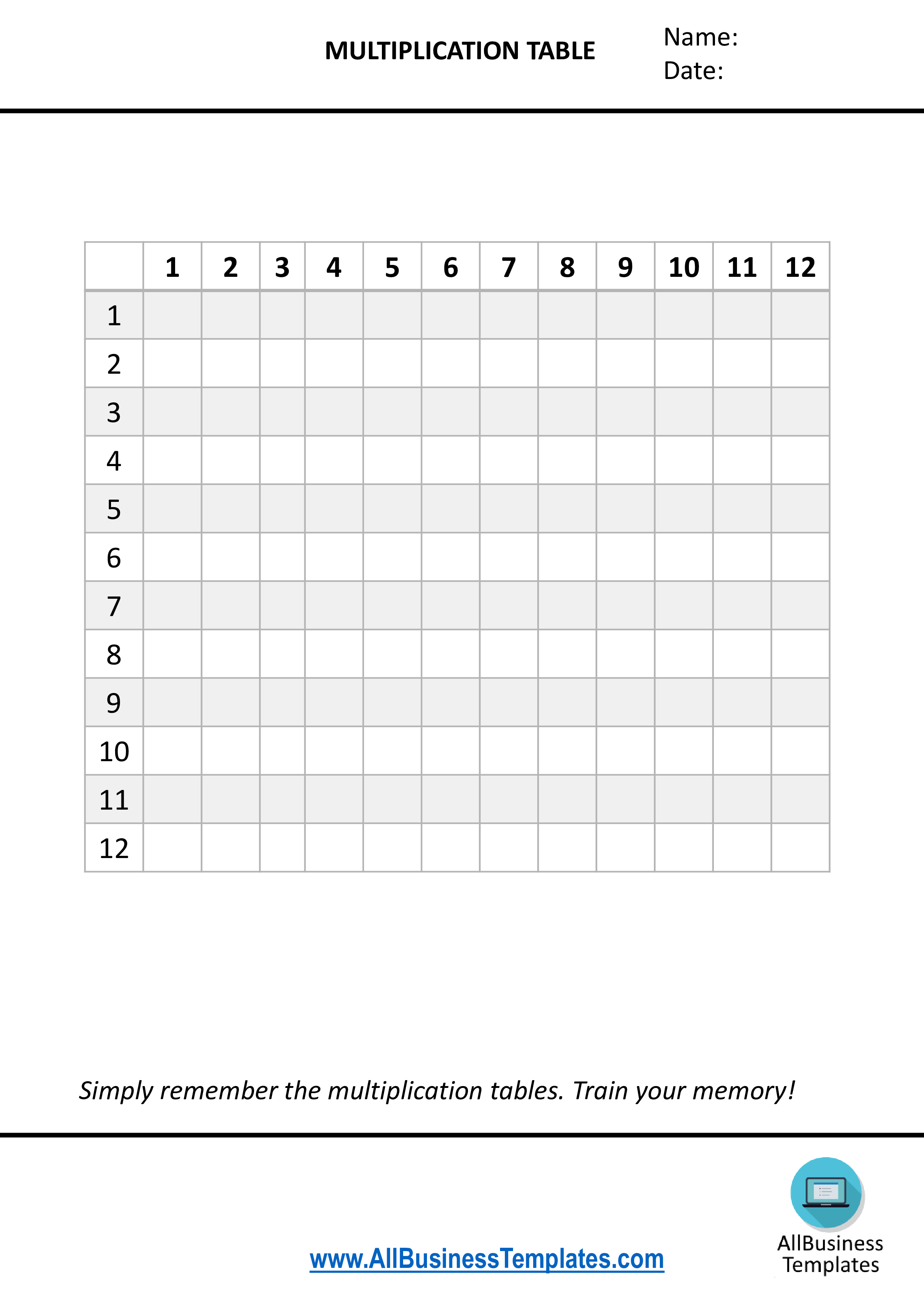Multiplication Tables
Save, fill-In The Blanks, Print, Done!

Download Multiplication Tables
Adobe Acrobat (.pdf)- This Document Has Been Certified by a Professional
- 100% customizable
- This is a digital download (624.31 kB)
- Language: English
- We recommend downloading this file onto your computer.
What's the best way to learn to multiply? Check out this 'Learn how to multiply tables template now!
In math, the multiplication table is a a common mathematical table that is useful to memorize the tables, often from 1 to 12 for children. It defines the multiplication operation for an algebraic system.
A multiplication table, often referred to as a times table, is a valuable tool for performing multiplication operations quickly and accurately. It consists of rows and columns that display the multiplication results of numbers from 1 to a certain limit, usually up to 10, 12, or 20. Here's how to use a multiplication table effectively:
Step 1: Understand the Layout
Examine the multiplication table to understand its layout. The numbers on the top row and the leftmost column represent the factors (numbers being multiplied).
The intersection of a row and column contains the product (result of the multiplication) of the corresponding factors.
Step 2: Choose the Factors
Determine the two numbers you want to multiply. One number will be found in the leftmost column (vertical), and the other will be in the top row (horizontal).
Step 3: Locate the Product
Find the cell where the row of one factor and the column of the other factor intersect.
The number in that cell is the product of the two factors.
Step 4: Perform the Multiplication
Write down the two factors you selected and the product you found in the cell.
Use the product in your calculations or as needed in a math problem.
Step 5: Practice and Memorize
Repeatedly use the multiplication table to practice multiplication and reinforce your understanding.
Over time, aim to memorize the multiplication facts for numbers up to a certain limit (e.g., up to 10 or 12). This will help you perform multiplication more quickly without needing to refer to the table.
Tips for Efficient Use:
Start with Smaller Numbers: If you're just beginning to learn multiplication, start with smaller numbers and gradually work your way up to larger ones.
Learn Patterns: Notice patterns in the multiplication table. For example, the products in the diagonal from top-left to bottom-right are all squares of the numbers (e.g., 1x1 = 1, 2x2 = 4, 3x3 = 9, etc.).
Practice Regularly: Regular practice will help you become more efficient in using the multiplication table. Flashcards, quizzes, and online resources can be helpful for practice.
Use Mental Math: As you become more confident with multiplication, try to perform calculations mentally without referring to the table.
Understand Commutative Property: Remember that multiplication is commutative, which means the order of factors doesn't affect the result (e.g., 4x3 is the same as 3x4, and both equal 12).
Using a multiplication table is a fundamental skill in mathematics, and it becomes increasingly important as you advance in your studies. It can save you time and serve as a valuable reference when you need to perform multiplication quickly and accurately.
Educators need forms more than any other industry. Therefore, we support you by providing this educational 1 to 12X Times Table chart template, which will save your time, cost and efforts and help you to reach the next level of success in educating children.
Learning math through play is a very good way of entertainment for parents and kids together since it gives your child a nice experience and enables them to learn how to recognize and understand how to multiply. Through multiplication these days, together with the parent, the child can develop social and cognitive skills, mature emotionally and gain the self-confidence required to engage in new experiences and environments.
Keyways with such learning to multiply by educational templates is that children learn include playing, being with other people, being active, ideas and experiences, communication with others, meeting mental challenges, being shown how to do new things, practicing and repeating skills and having fun.
This Times Table chart is intuitive, ready-to-use and structured in a smart way. Try it now and let this template inspire you. We certainly encourage to use this X1 to X12 Times Table chart for your own good and are confident it will fit your needs. Using this learning how to multiply template guarantees your family a fun learning experience that stimulates the brain and memory of your child(ren) and yourself!
Download this Multiplication Tables template now!
DISCLAIMER
Nothing on this site shall be considered legal advice and no attorney-client relationship is established.
Leave a Reply. If you have any questions or remarks, feel free to post them below.
All Times Tables
What's the best way to learn multiplication for kids? Check out these math multiplication charts now!
Read moreRelated templates
Latest templates
Latest topics
- GDPR Compliance Templates
What do you need to become GDPR compliant? Are you looking for useful GDPR document templates to make you compliant? All these compliance documents will be available to download instantly... - Google Docs Templates
How to create documents in Google Docs? We provide Google Docs compatible template and these are the reasons why it's useful to work with Google Docs... - IT Security Standards Kit
What are IT Security Standards? Check out our collection of this newly updated IT Security Kit Standard templates, including policies, controls, processes, checklists, procedures and other documents. - Letter Format
How to format a letter? Here is a brief overview of common letter formats and templates in USA and UK and get inspirited immediately! - Google Sheets Templates
How to work with Google Sheets templates? Where to download useful Google Sheets templates? Check out our samples here.
cheese

